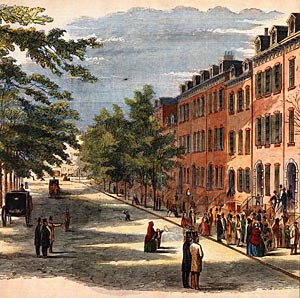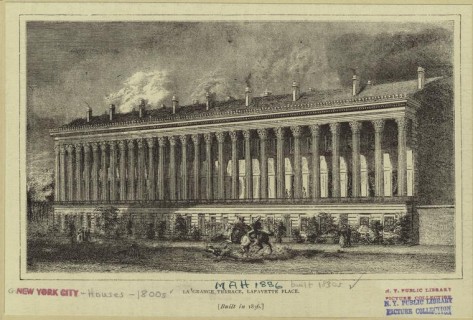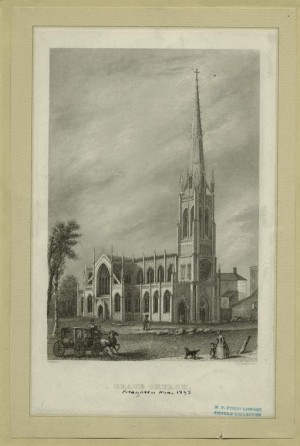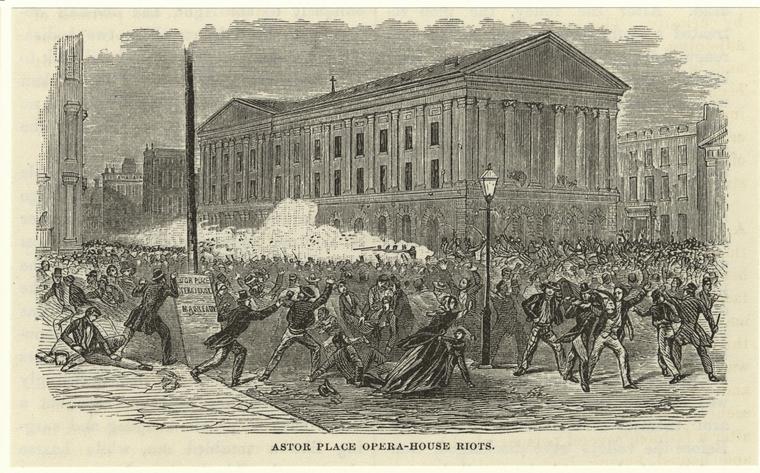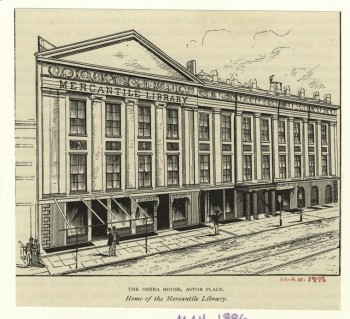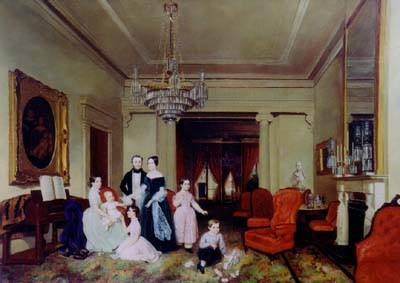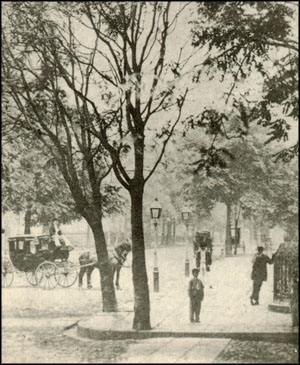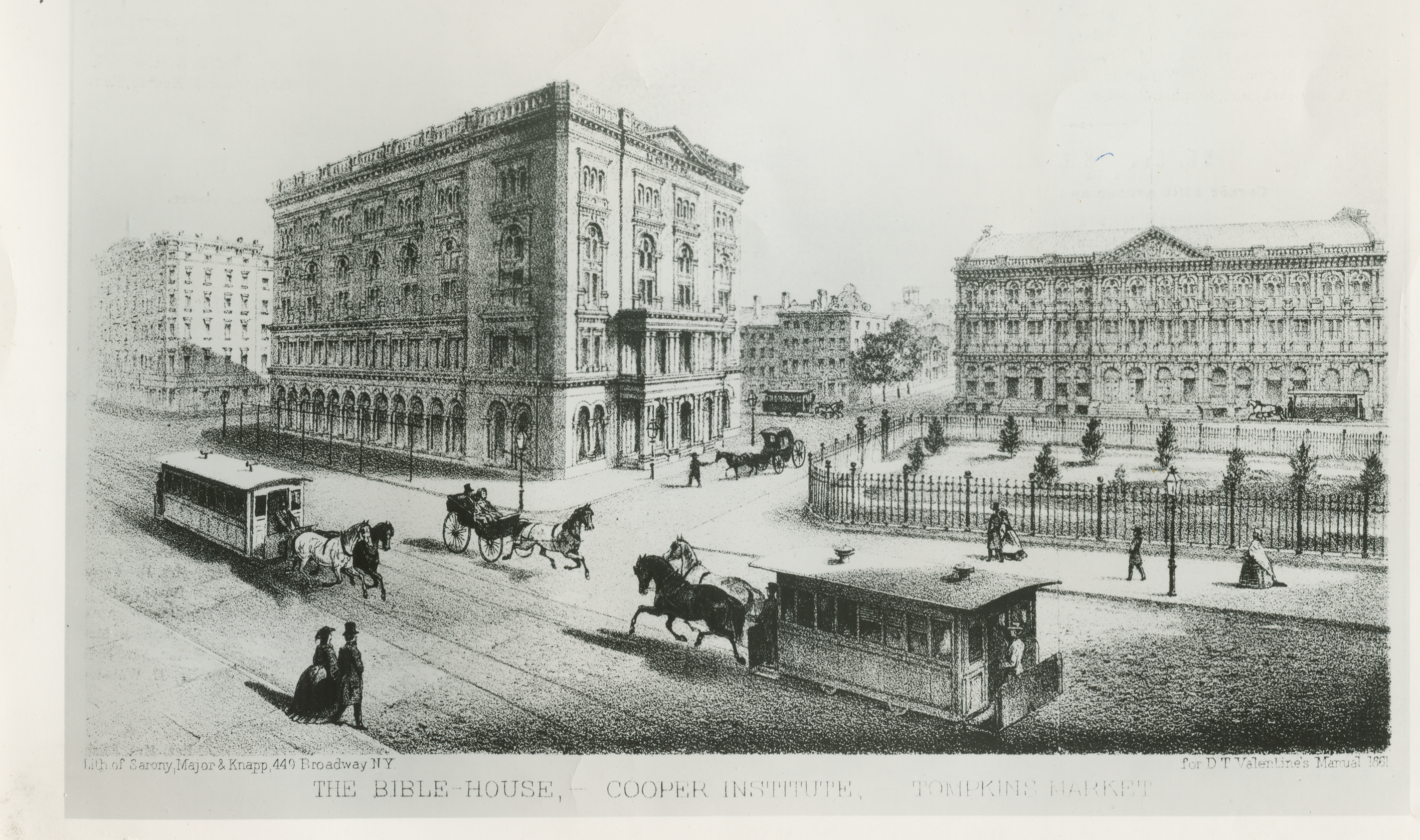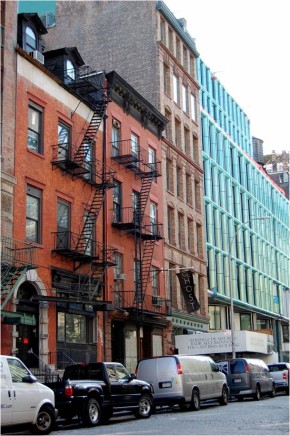Historic Furnishings Plan – Back to the 1850s
In an effort to present an even more authentic interpretation of the House and the family’s original furnishings, we are in the midst of extensive research to ensure that window treatments, carpeting, and placement of the Tredwell furniture accurately represent our period – 1835-1865. For example, we have removed the badly worn hall carpet to study the floor beneath for evidence of nail holes and paint to guide us in choosing appropriate replacement. The bedroom carpets were taken up to provide access for the removal and reinstallation of the recently conserved gas chandeliers in the parlors.
As part of the research for the Historic Furnishings Plan, we have conducted extensive analysis of the paint and decorative finishes in our period rooms. Microscopic and chemical analyses of samples taken tell us what kinds of paints and what colors were used during different periods of the house’s history. All evidence points to a top-to-bottom redecoration of the House in the 1850s.
The Tredwell Family
In the Beginning . . .
Seabury Tredwell’s great-great-great grandfather, Edward Tredwell, came to Massachusetts from the county of Kent, England, around 1637. By 1649, he had settled in the village of Hempstead, Long Island, 30 miles east of New York City. On his mother’s side, Seabury was directly descended from Mayflower passengers John Alden and Priscilla Mullins, whose romance was immortalized in 1858 in Henry Wadsworth Longfellow’s narrative poem “The Courtship of Miles Standish.”
The Neighborhood
The Rise and Fall (and Rise) of an Elite Neighborhood
The Bond Street area where Seabury Tredwell moved his large family in 1835 had been attracting the city’s wealthiest and most influential citizens since the 1820s. Broadway, a block and a half west of the Tredwells’ new home, was still a residential street. And just two blocks to the south, Bond Street, lined with row houses of red brick and white marble, stretched for 1,000 uninterrupted feet between Bowery and Broadway.
Ongoing Restoration News: These Walls Can Still Talk
On Friday, September 16, 2011, in preparation for the next stage of our structural restoration project, sheets of 20th century architectural canvas were removed from the east wall in the parlor floor hallway — revealing the original plaster, complete with 19th-century paint. The cracks caused by water and the passage of time have now been repaired and a temporary paint coat applied.
The “Fab-rik-o-na” canvas was applied in 1935 by the Museum’s founder, George Chapman, to create a smooth surface over aging plaster — a common practice at that time. When the canvas layer (and its coats of 20th century paint) was peeled away, it revealed a 19th-century wall surface that hadn’t been seen in over 75 years. It also uncovered a wealth of clues that will provide information about how the House was decorated, how the hallway was used, and when the Tredwells (who lived here for nearly 100 years) made changes.
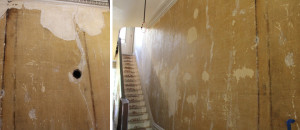
- A hole near the foyer shows where a pipe was attached for a free-standing coal stove. No doubt cold air swept in whenever the front door was opened. The stove was removed when the family installed an elevator in the same spot following daughter Sarah’s carriage accident in 1872.
- Dark lines on the wall show where the elevator shaft was built out into the hallway, corresponding exactly with evidence of the elevator discovered on the hallway floorboards in an earlier investigation.
- A plaster patch the size of a quarter near the ceiling indicates that a substantial picture hook was once attached in line with the ceiling medallion for the hallway light fixture. It’s likely that a mirror once hung there, to reflect the light and create the illusion of moore space.
- The 1870 paint color in the hallway is now visible. It has oxidized to an ocher and the glaze over it is also clearly visible. Further paint analysis will determine the original color, of course. It also matches the color that the house was painted in the early 1930s, when it became a museum.
- A fragment of 1840s/50s floor cloth was found under the plumbing chase on the wall.
The evidence provided by the newly revealed wall will go a long way towards unraveling some of the more persistent riddles about the House. Stay tuned.
House-Wide Structural Restoration Nearing Completion
Maintaining our 1832 landmark building requires ongoing work. The current phase of restoration includes repairs to the decorative plaster finishes in a number of our period rooms; a complete upgrade of the Museum’s electrical system; repair and painting of the rear façade and 13 original windows; and restoration of the decorative wood cornice on the front façade.
The $598,000 project, which has been generously funded by our Council Member, Rosie Mendez, is nearing completion. While we remain ‘open for business” during the restoration work, unfortunately we are not able to display any of the Tredwell dresses in the collection.
« Newer Posts